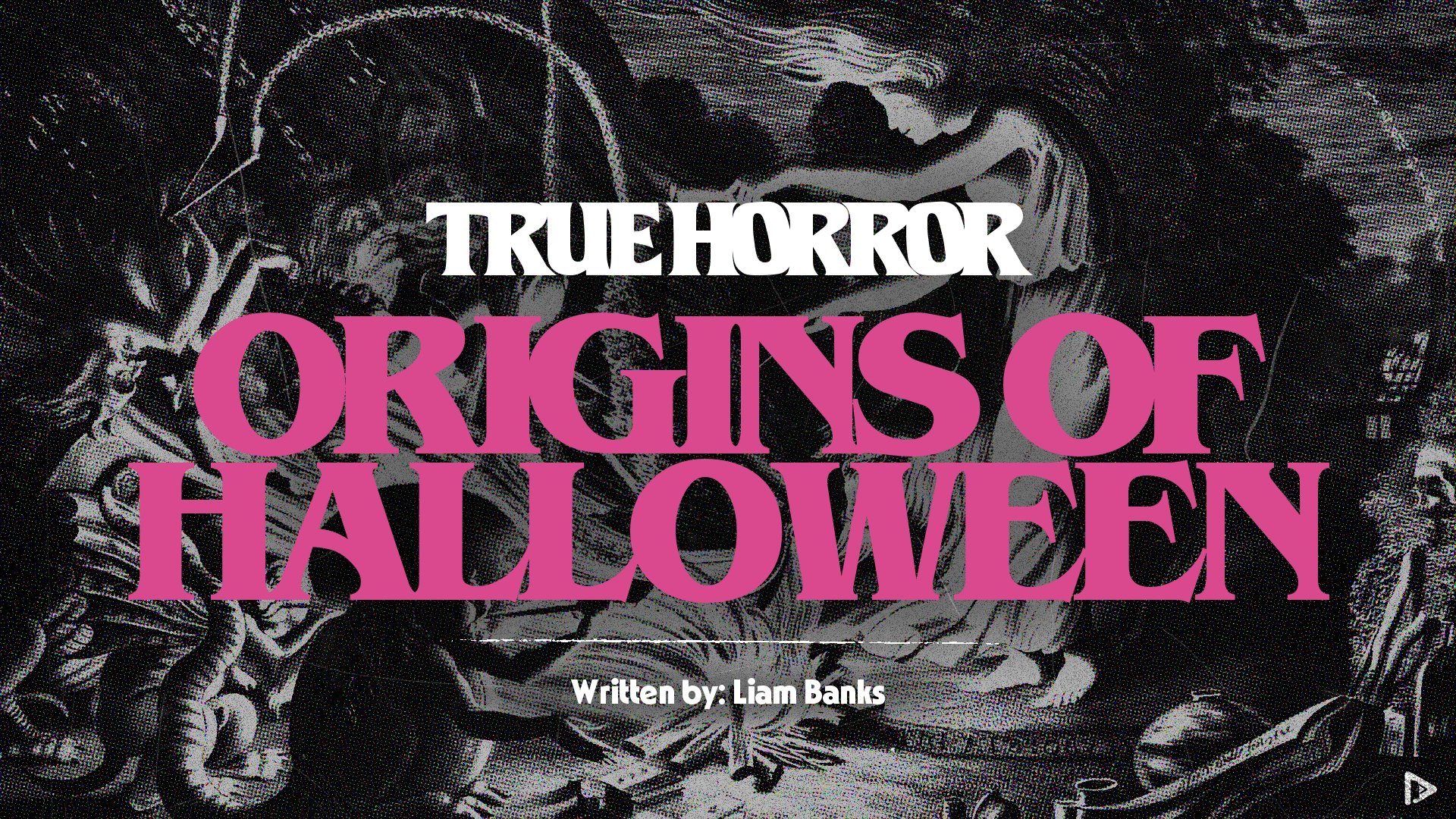THE ORIGINS OF HALLOWEEN TRADITIONS!
Halloween, All Hallows Eve, All Saints Eve, Samhain. October 31st goes by many names but just how did Halloween get its start and become the phenomenon it is today. This final blog post of ‘Spook-Tober’ attempts to explore the origins of our favourite Holiday so buckle up!
It is widely believed that Halloween as we know it started some 2,000 years ago when the Celtic people of Europe would come together to celebrate the end of the Harvest. With the end of Harvest came the start of the darker half of the year in a festival originally called Samhain (pronounced Sow-In). The Celtic day began and ended at Sunset so celebrations would usually begin on the evening of October 31st going into November 1st. This festival was widely observed through Ireland, Scotland and the Isle of Man, a similar festival called Sauin was celebrated in Wales, Cornwall and Brittany.
With origins steeped in Celtic Pagan culture, Samhain was marked by huge gatherings, great feasts, and the opening of Ancient Burial Grounds. Still making its way into modern day traditions, the night of Halloween was/ is believed to be the night when the veil between the living and the dead is at its thinnest. Although the traditions of this festival were not recorded in great detail until the early modern era, there was mention of animal sacrifices and special bonfires being lit on the night of October 31st. Spirits and Fairies would make their way into our world when the boundaries were lowered to the ‘other-world.’ To appease them they would accept offerings of food and drink. The bonfires would offer protection from these creatures and were deemed to have cleansing powers, ensuring a safe winter going forward and a successful harvest the following year. People would wear costumes so as not to be recognised by these creatures, often scary in appearance to blend in with the ghosts and ghouls who were thought to be roaming about. In these celebrations the colours orange and black were prominently used, orange would symbolise crops whilst the black represented the death of summer. You might have already noticed how some of these original traditions have made their way into our very own customs on a modern day Halloween.
By 43 A.D. the Roman Empire had pretty much conquered most of the Celtic Territories. This did not stop the celebrations from continuing. In Roman culture a day in late October called ‘Feralia’ was combined with the traditions of Samhain to commemorate the passing of the dead. Another sacred day looked to honour the Roman Goddess Pomona, the goddess of fruit and trees. The symbol of this deity was an apple. See where we are going here? Might just explain why we go bobbing for apples every year now.
Jumping forward again now to 609 A.D. Christianity came into play. Here came the introduction of All Martyrs Day. This was introduced by Pope Boniface IV. It was a day in Rome to celebrate all Christian martyrs. Pope Gregory III then expanded this celebration to include ‘all saints’ as well as martyrs, shifting the observance of this day from May 13th to November 1st – now renamed All Saints’ Day. In the 9th Century, Christian values and traditions had spread into Celtic territories with the customs bleeding into one another. In 1000 A.D. The Church named November 2nd All Souls’ Day, a Christian sanctioned Holiday to honour the dead. All Souls’ Day was incredibly similar to the original Samhain celebration. Huge bonfires were lit, people held parades and dressed up in costumes of Saints, Angels and Devils. All Saints’ Day held November 1st was also known as ‘All Hallows’ or ‘All-Hallowmas’ (coming from Middle English Alholowmesse – meaning All Saints’ Day). The traditional night of Samhain was then called All Hallows Eve, leading to us eventually calling October 31st Halloween.
Coming to the Middle Ages, we stumble upon some of our favourite modern day Halloween traditions. On All Souls’ Day bells would ring out for the souls of those in Purgatory. The custom of ‘Souling’ then developed where groups of poor people, often children would go door to door, collecting cakes and treats in exchange for praying for the souls of the dead. Whilst ‘souling’ Christians would carry lanterns with them. Often hollowed out turnips carved to look like the faces of the dead. Not quite a pumpkin but you get the gist. These lights, similar to the aforementioned bonfires would offer protection but also act as a guide for the lost souls wandering our world to find their own earthly homes when visiting.
The celebration of Halloween then made its way to Colonial America. The night of Halloween became a mixing pot of ethnic groups and beliefs, forming a distinctly American version of the Holiday. Public events were held, neighbours would gather and share stories of the dead, tell each other’s fortunes and sing songs. Here came the advent of Ghost Stories into the mix and the night itself became one of mischief and trickery. Toward the latter half of the 19th Century America was flooded with new immigrants. A lot came from Ireland, fleeing the potato famine. Their arrival helped cement Halloween as a national celebration.
Taking from European traditions, Americans would dress up in costumes and go from house to house asking for money and food. This practice became known as ‘Trick or Treating.’ In the late 1800s there was a movement in America to make the celebration of Halloween more about community and neighbourly get togethers as opposed to the ghosts, pranks and witchcraft. Parties were common amongst both children and adults, with a focus now on games, festive foods and costumes. Halloween lost a lot of it’s more frightening elements at the turn of the century.
The traditions of Trick or Treating, costume wearing, and partying continue to this day. We might have lost the animal sacrifices somewhere along the way but maybe that isn’t a bad thing! A lot of people can give Halloween a bad rep saying it’s just another ‘Americanised’ Holiday and to some degree they are not wrong. Billions of dollars are spent on Halloween annually, making it the second most profitable Holiday behind Christmas in the US. When we look at the Holiday as a whole though and where it all started its hard not to appreciate how amazing it is that some of those original traditions are still recognised and celebrated even now some 2000 years later. Halloween is so special to so many and we are sure it will continue to evolve over the next 2000 years.
So there you have it, consider this your Halloween History Lesson for the year! You passed with flying colours. When you’re carving your pumpkin this year or getting your costume together, just remember where it all started! From all of the SuperfreakMedia Team we hope you have a fantastic Halloween!
Stay Safe and as always…




